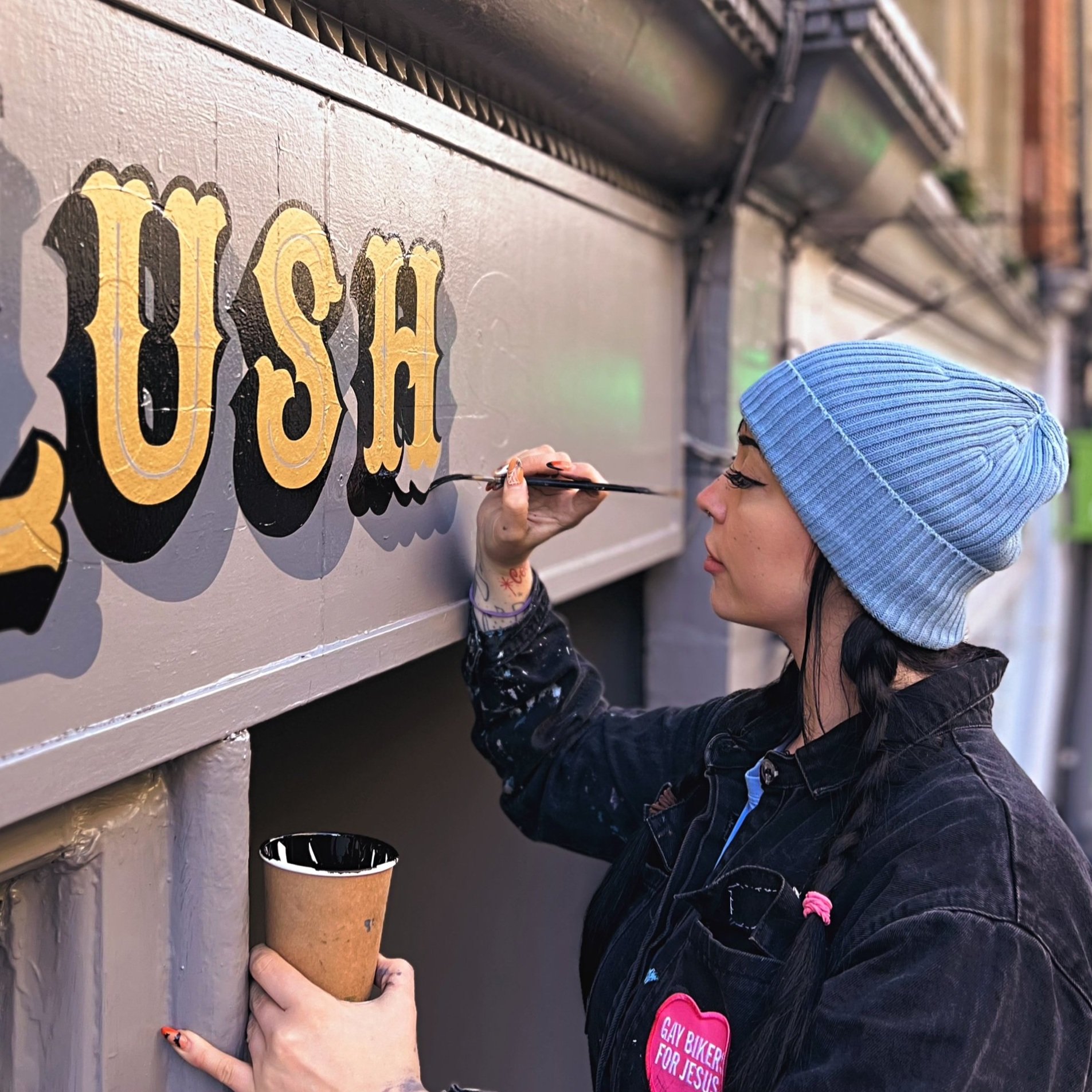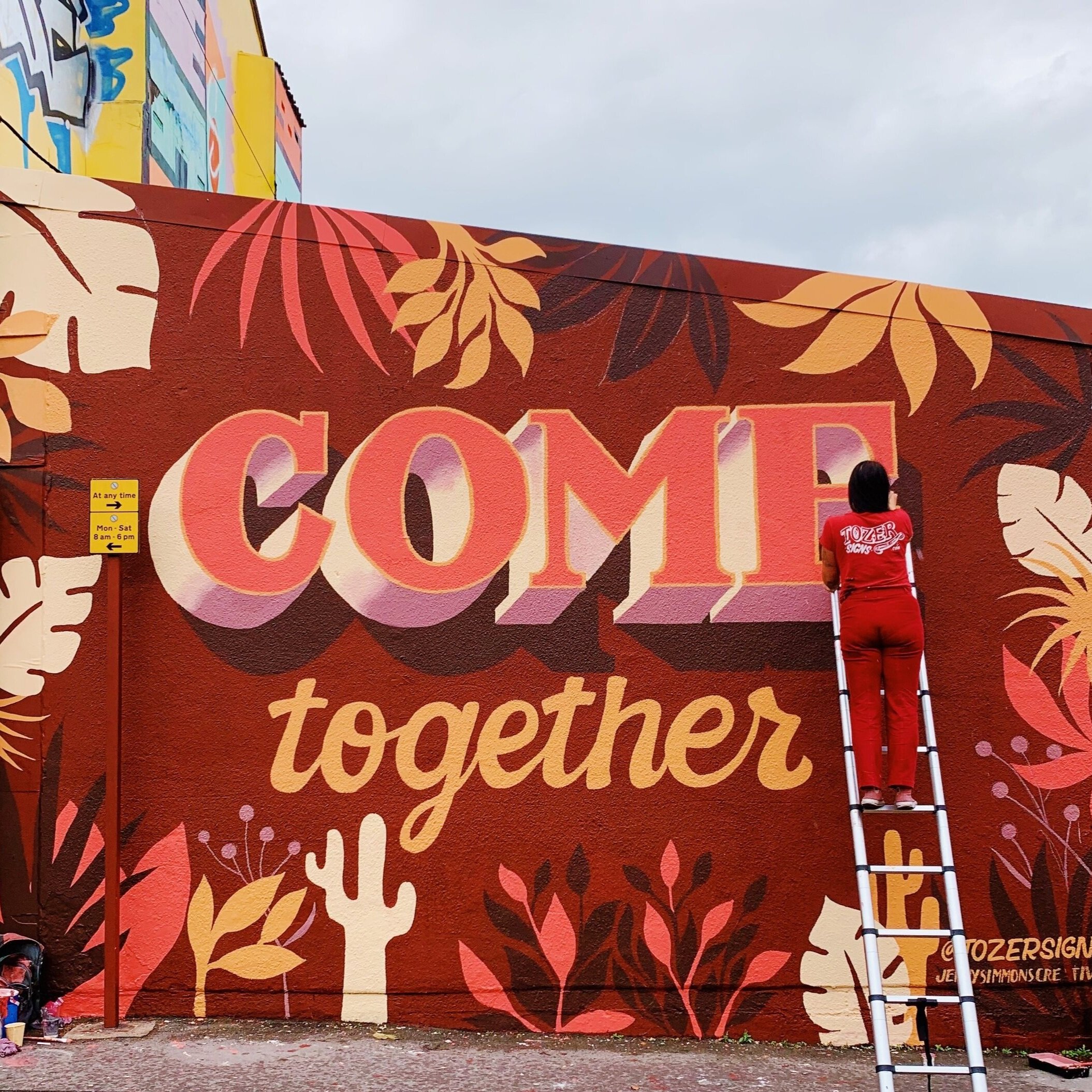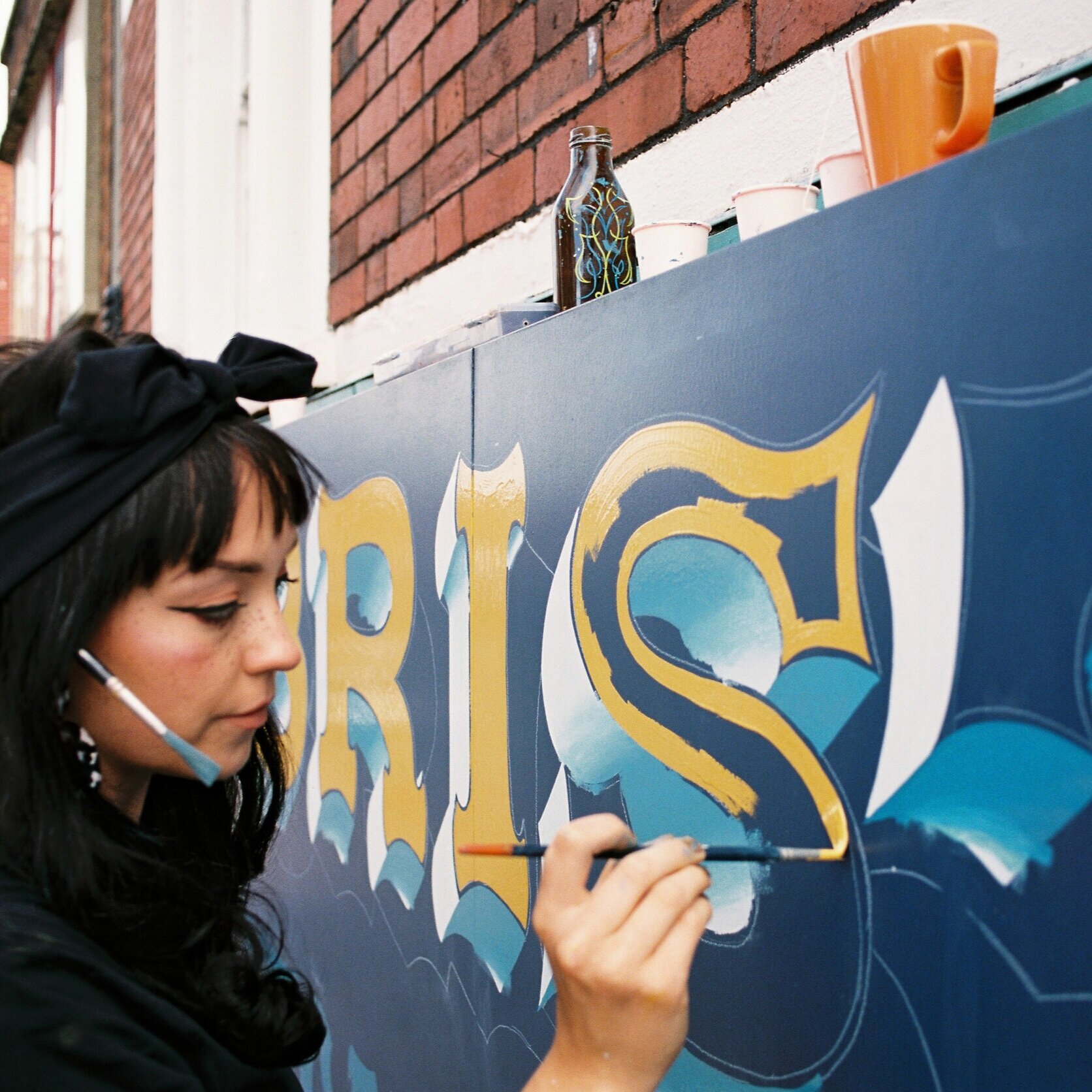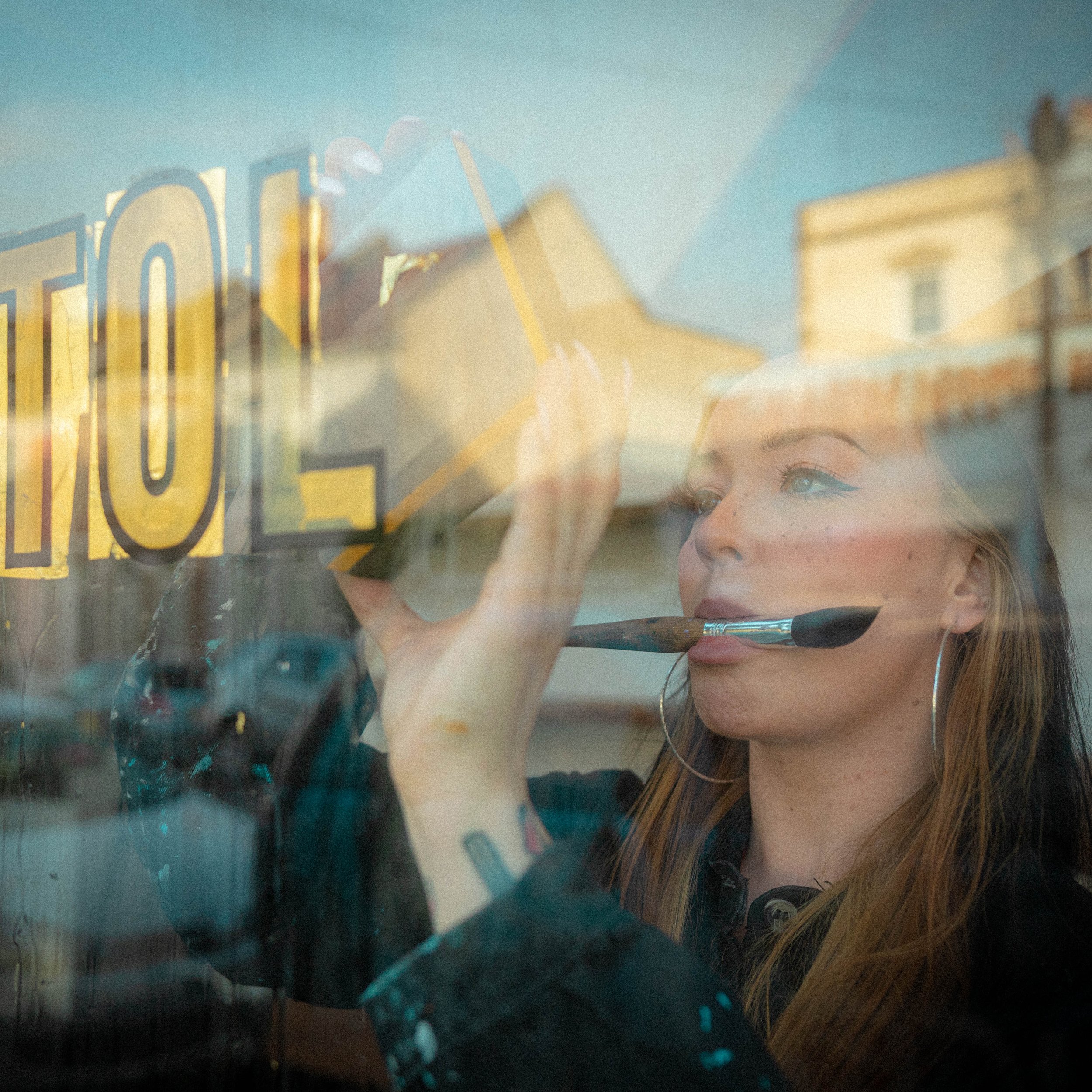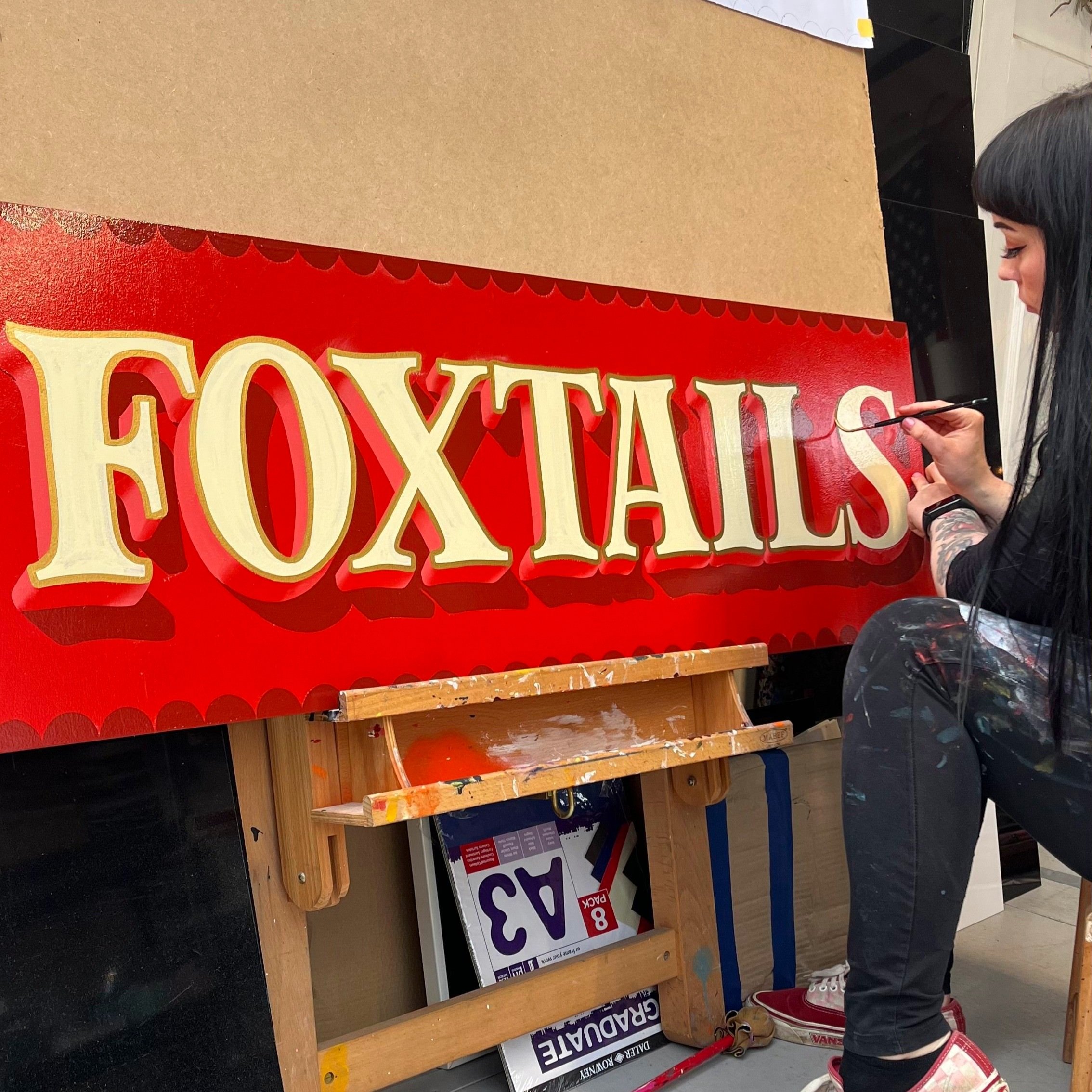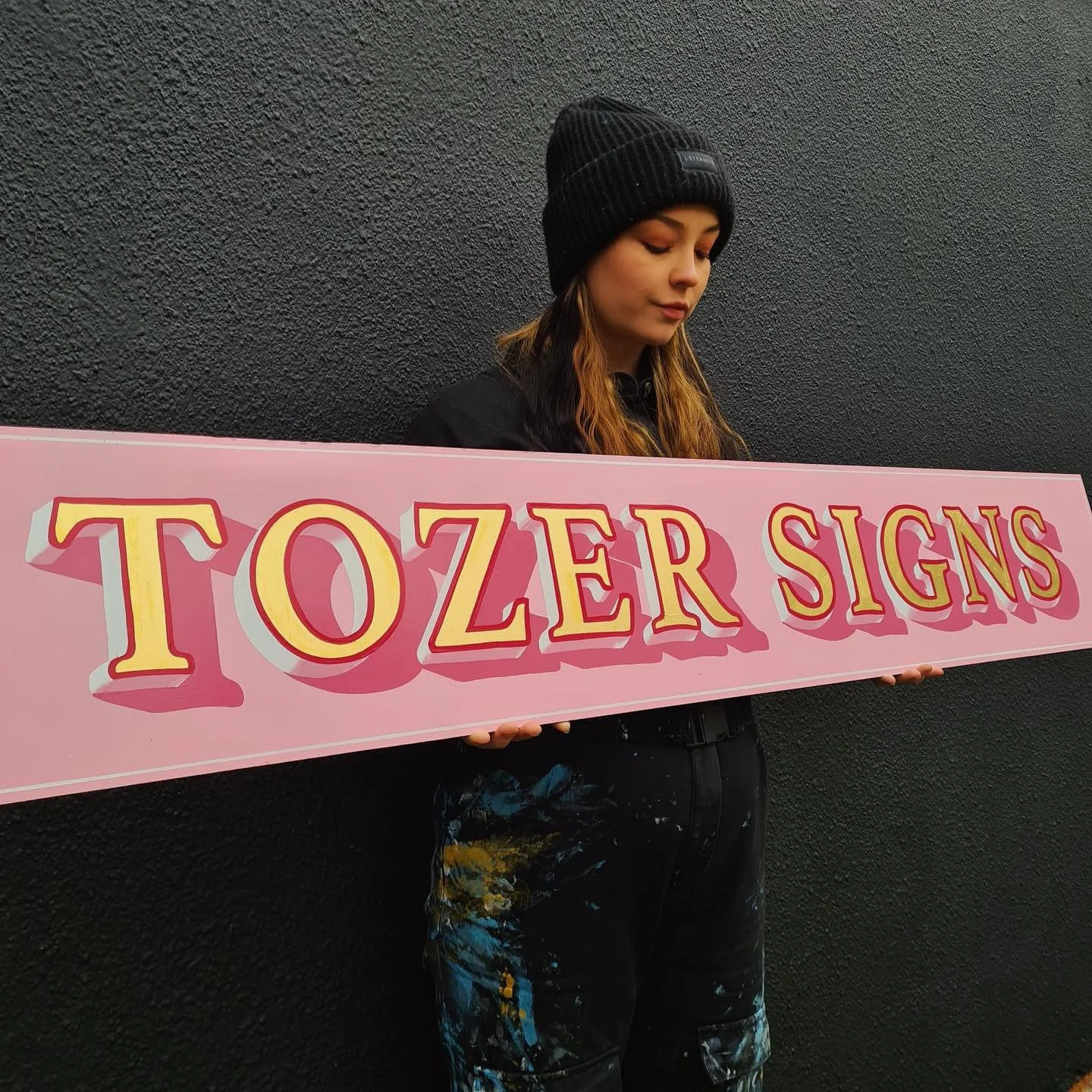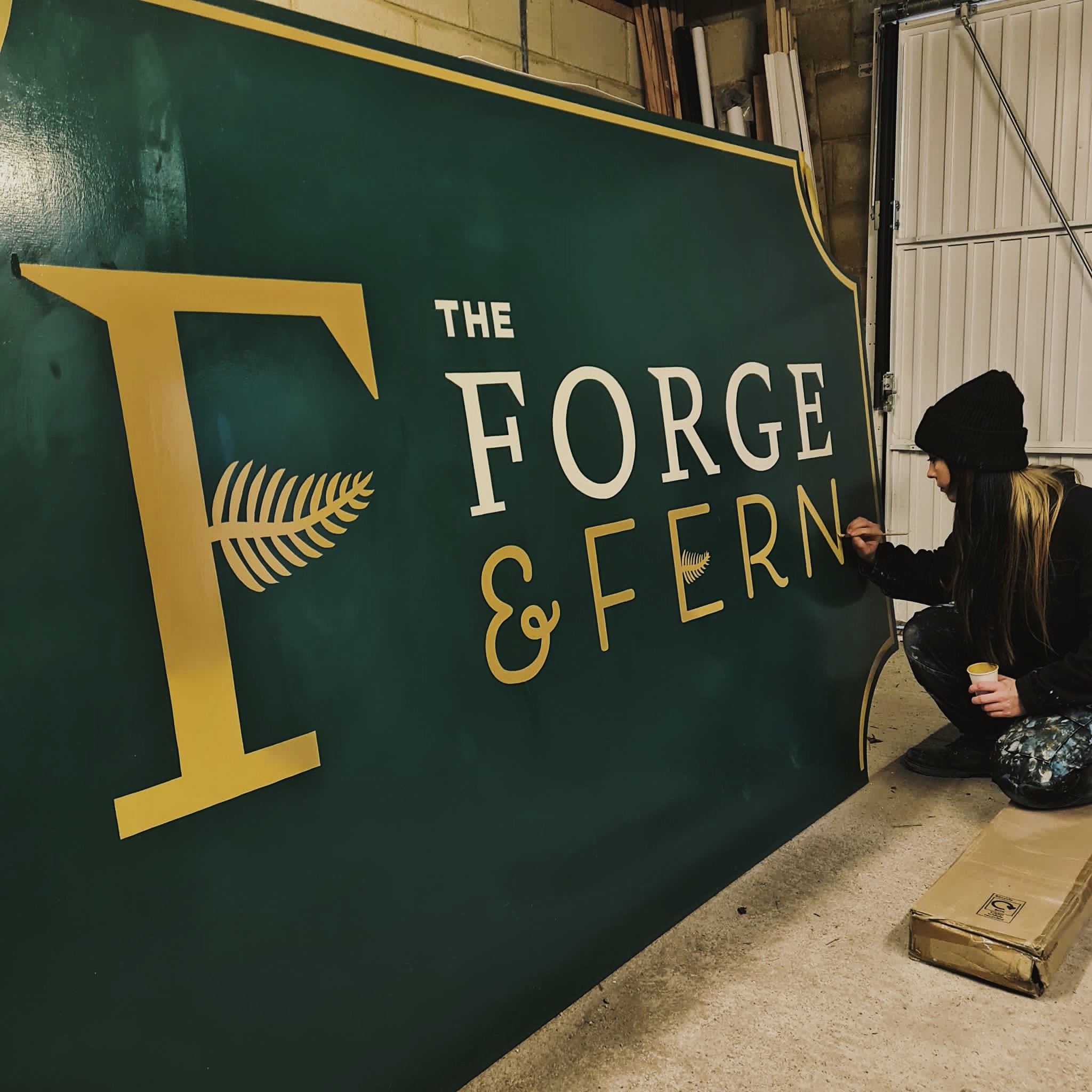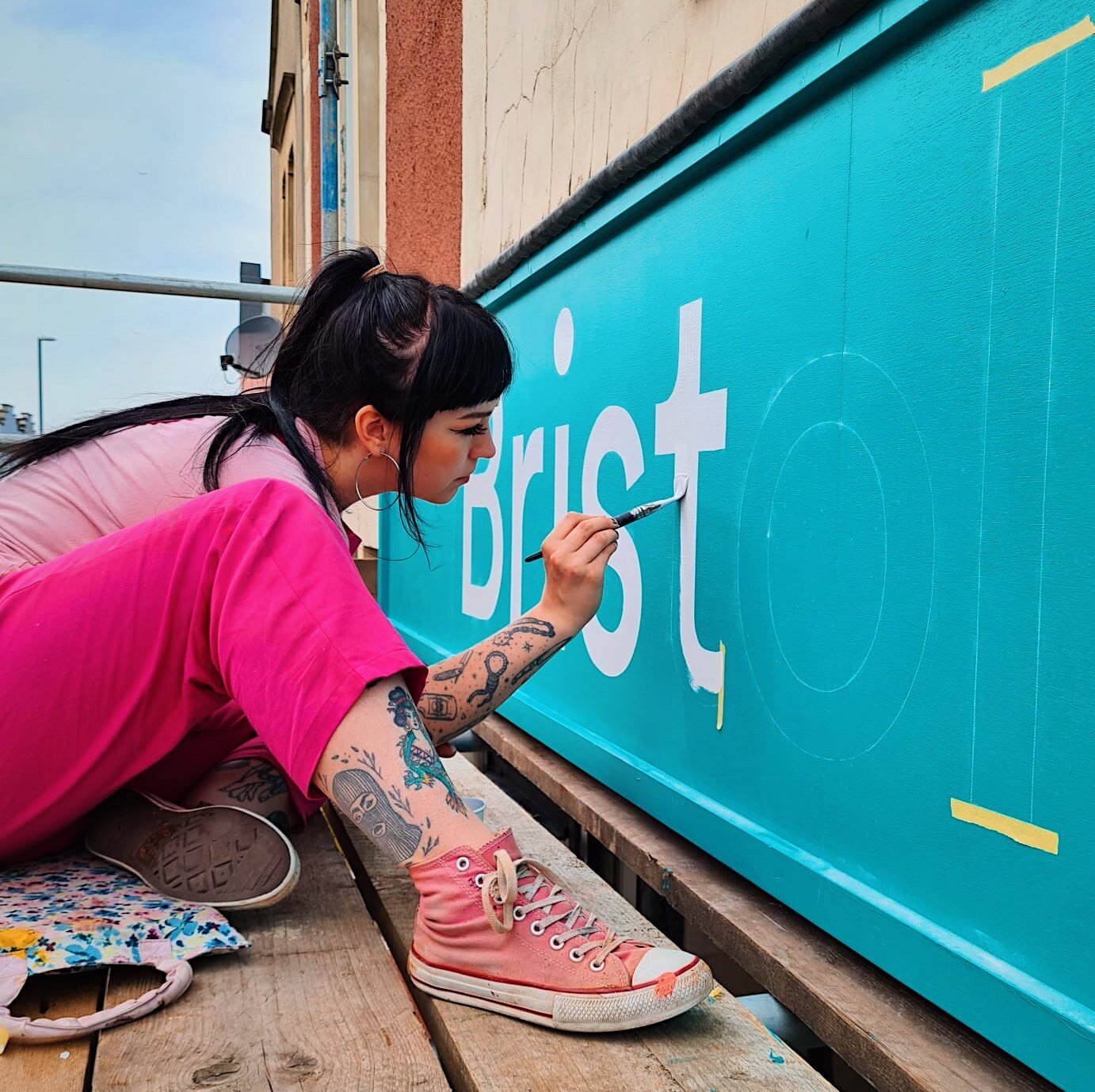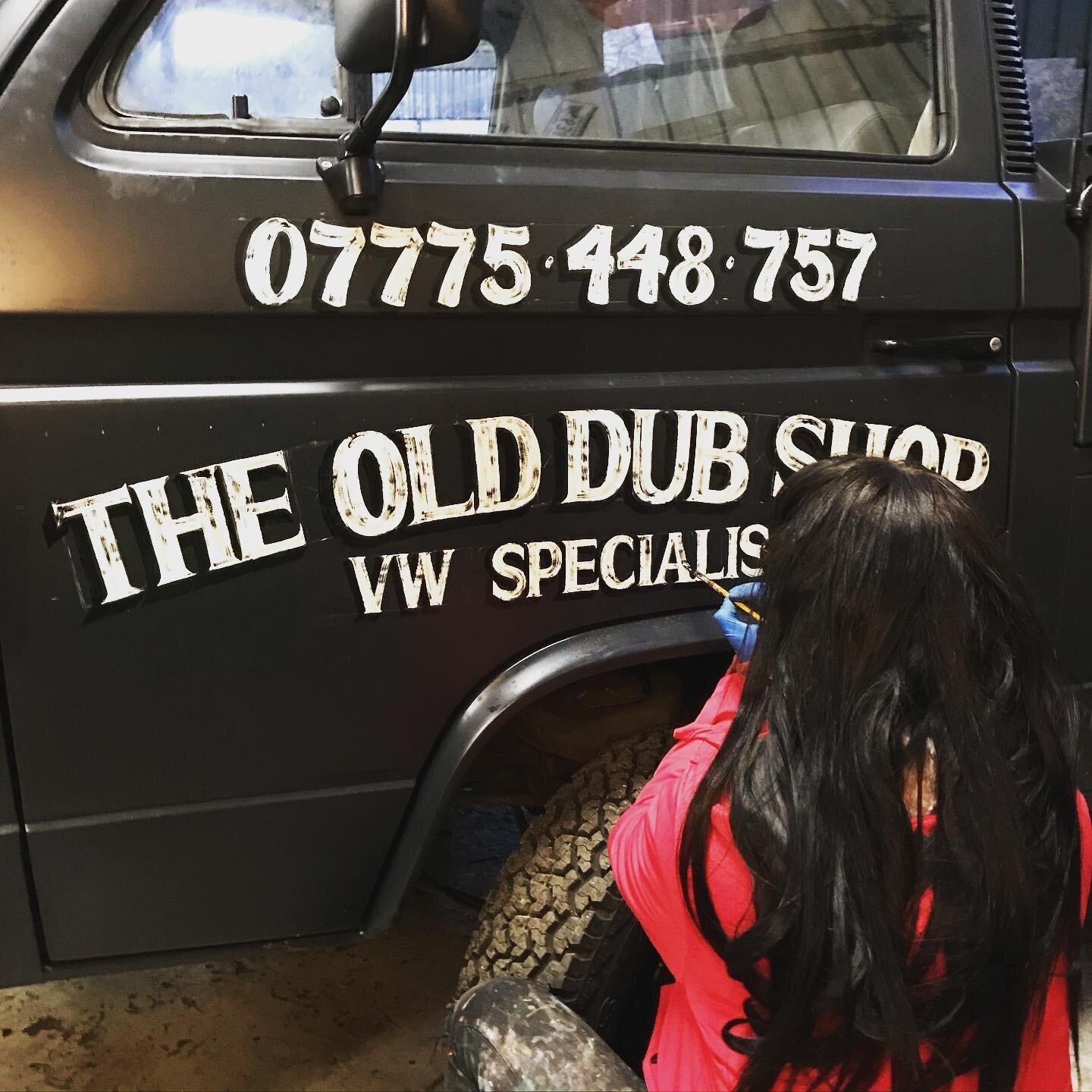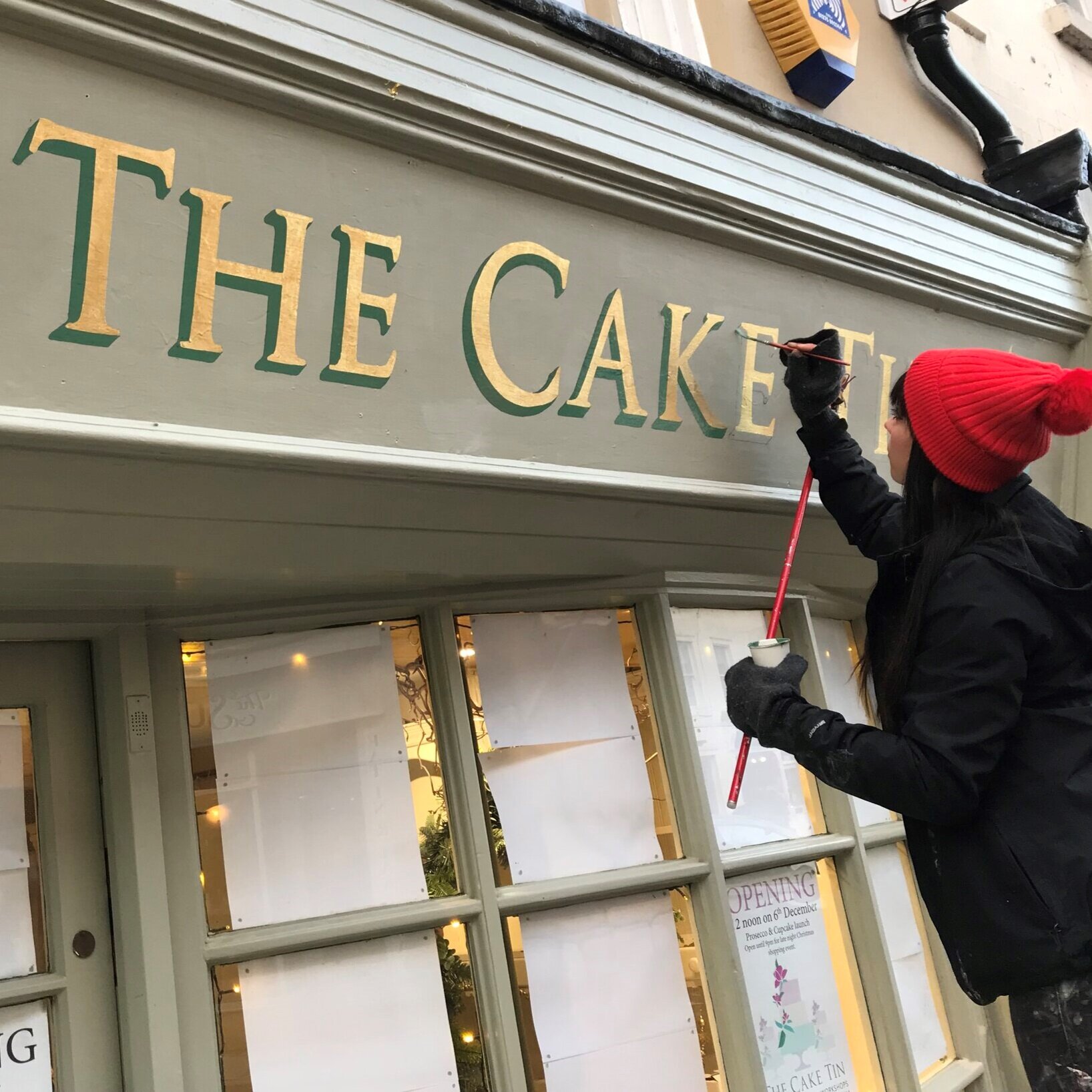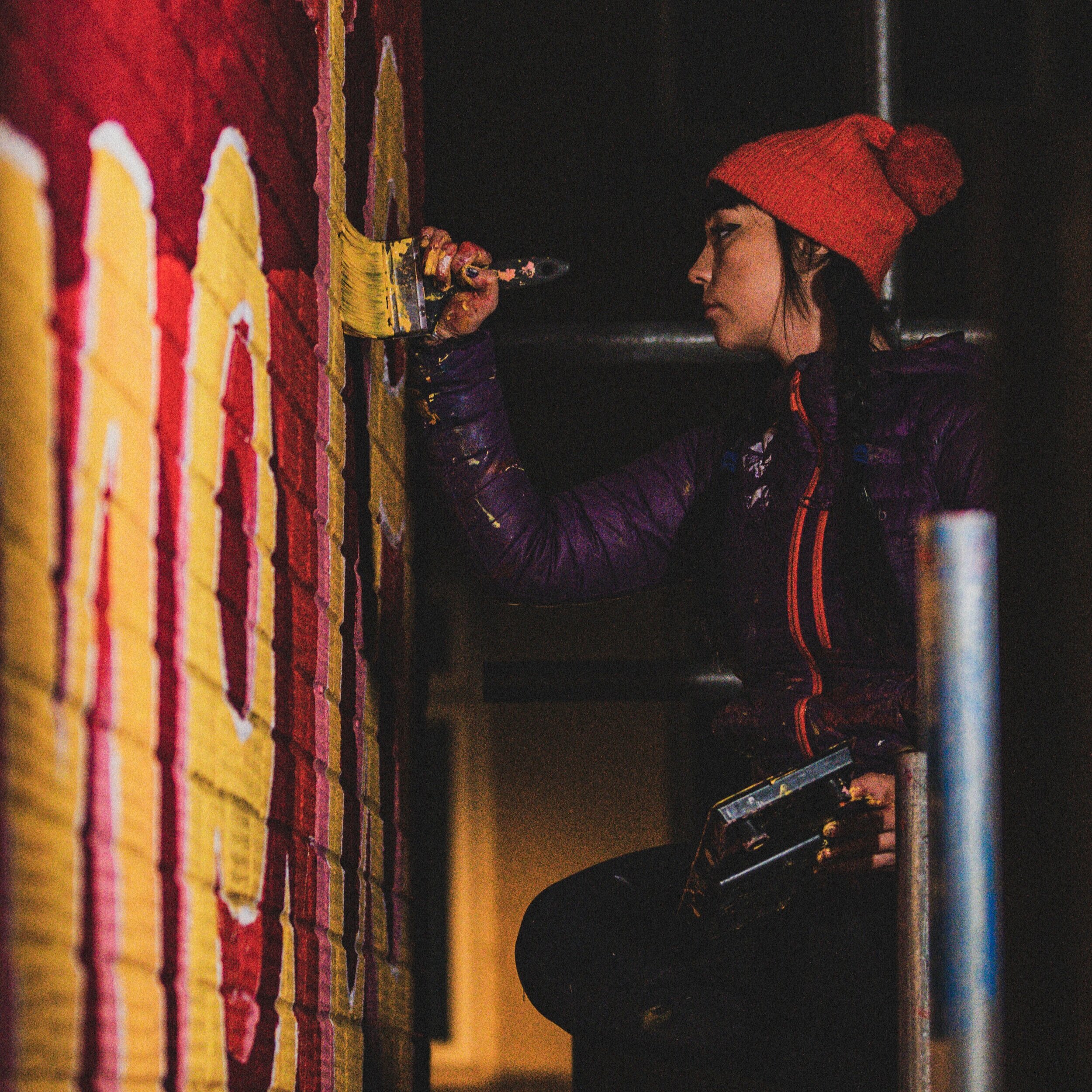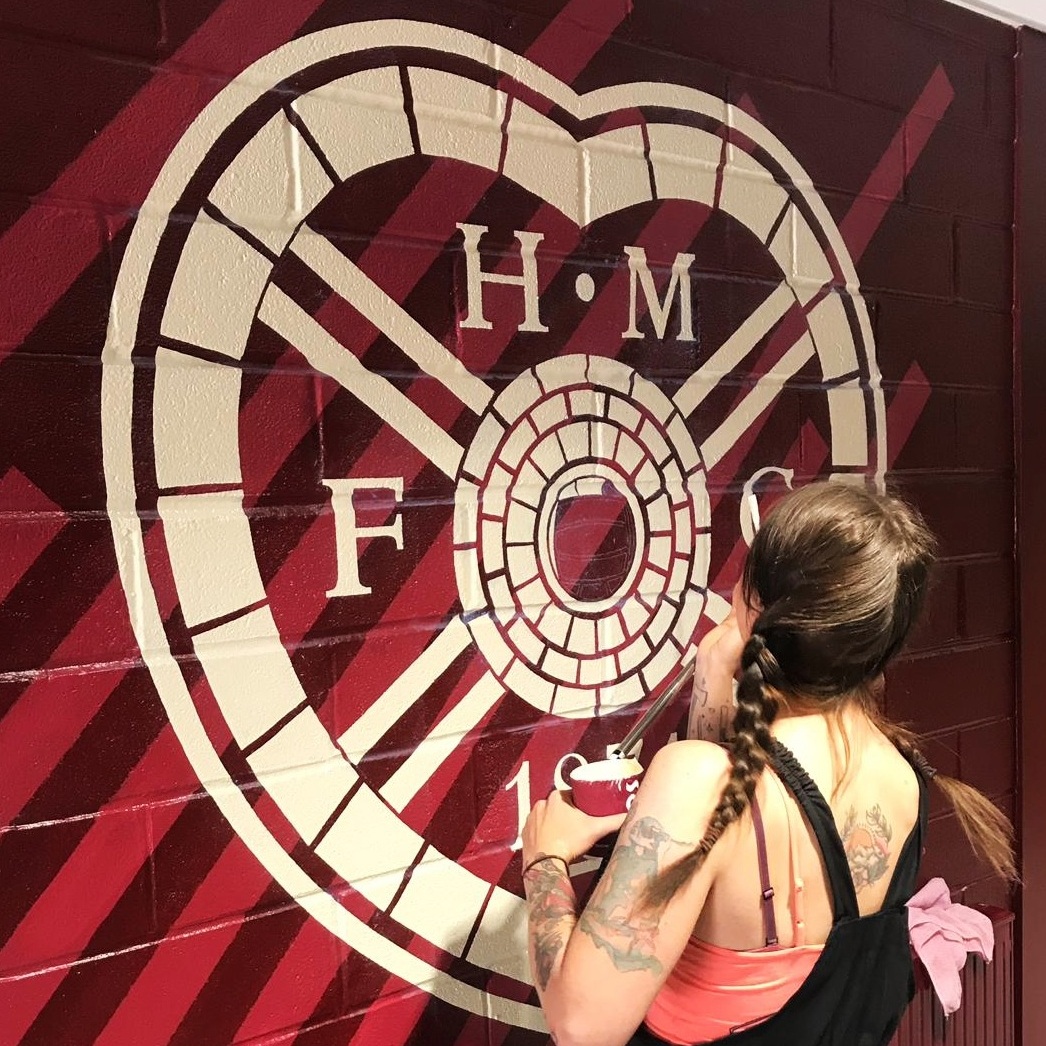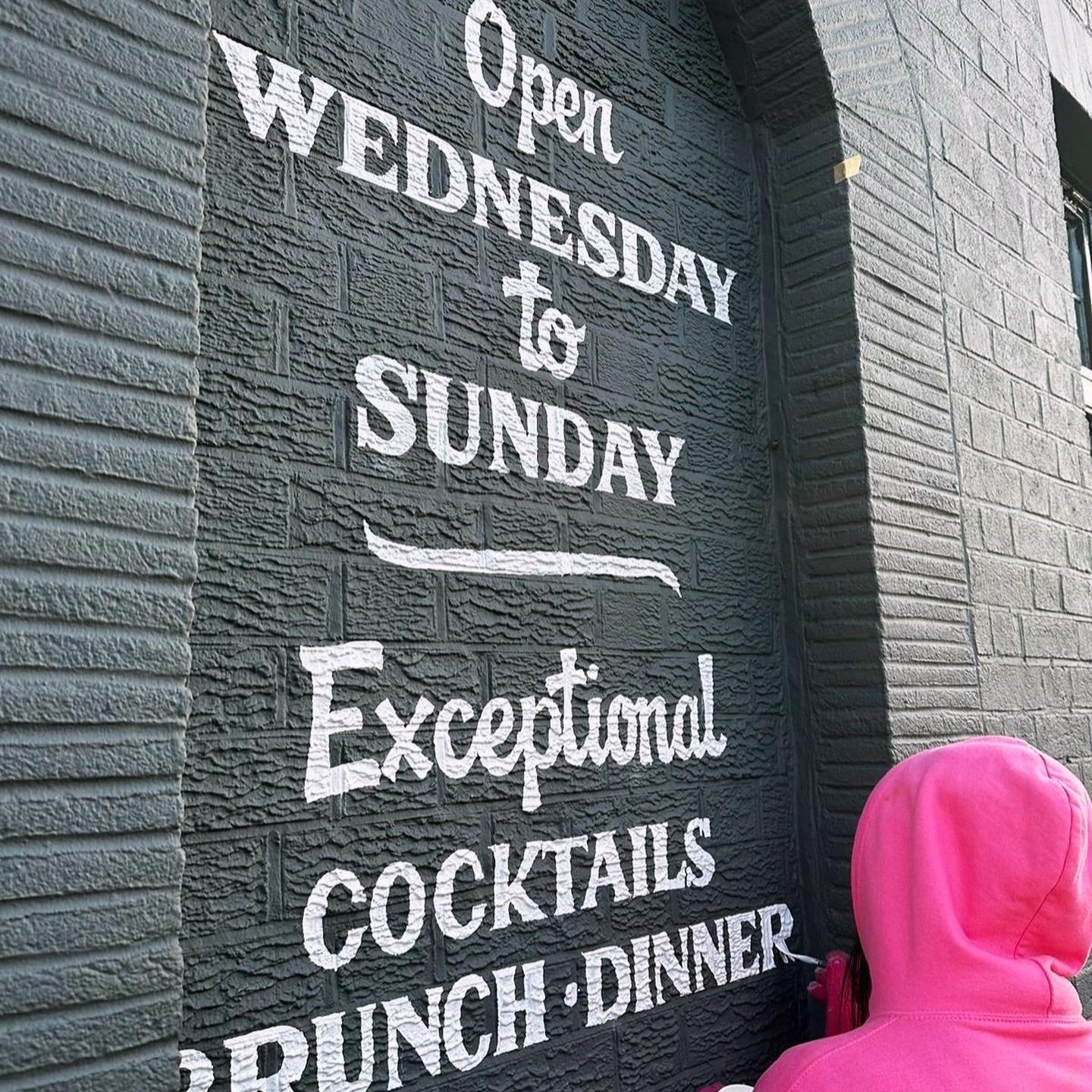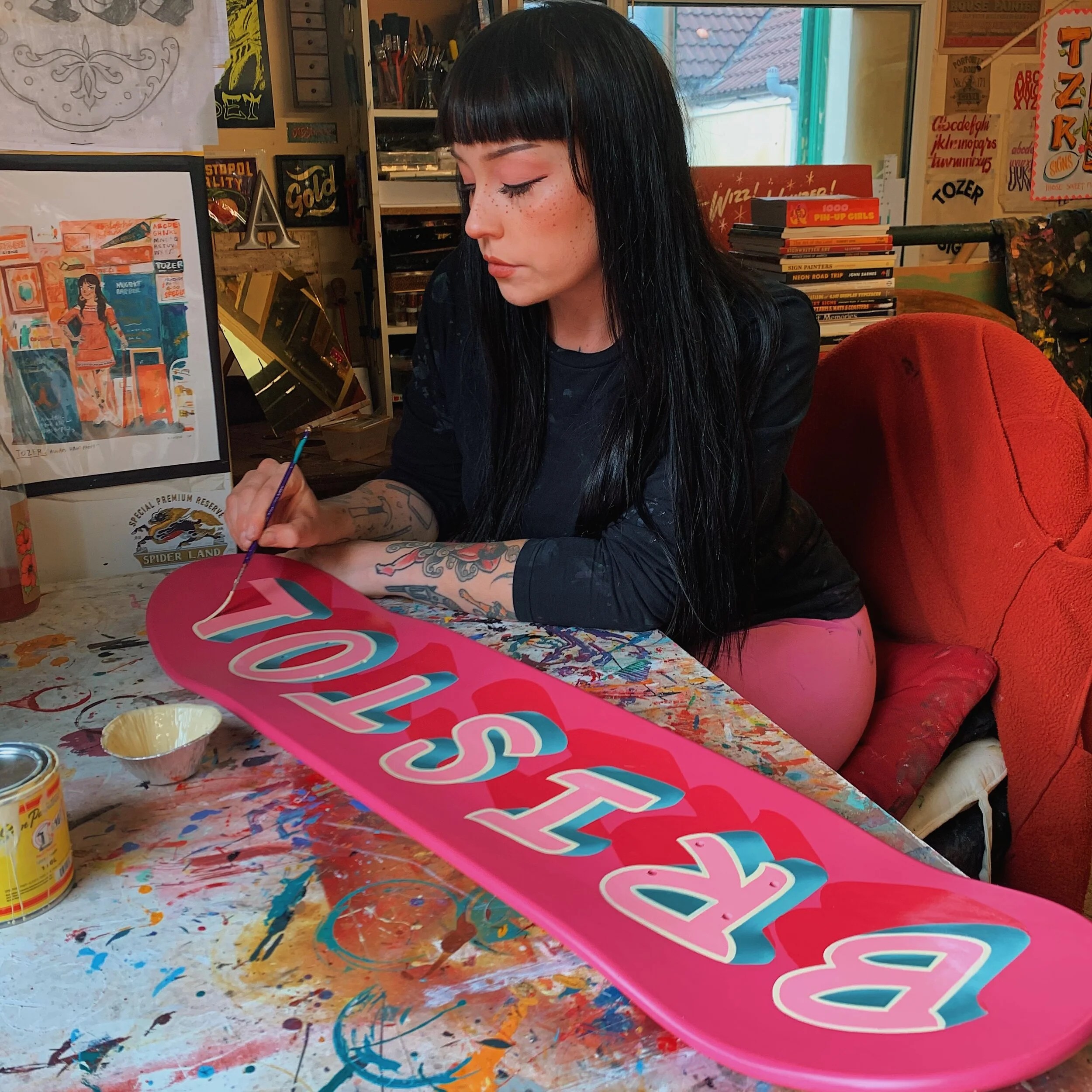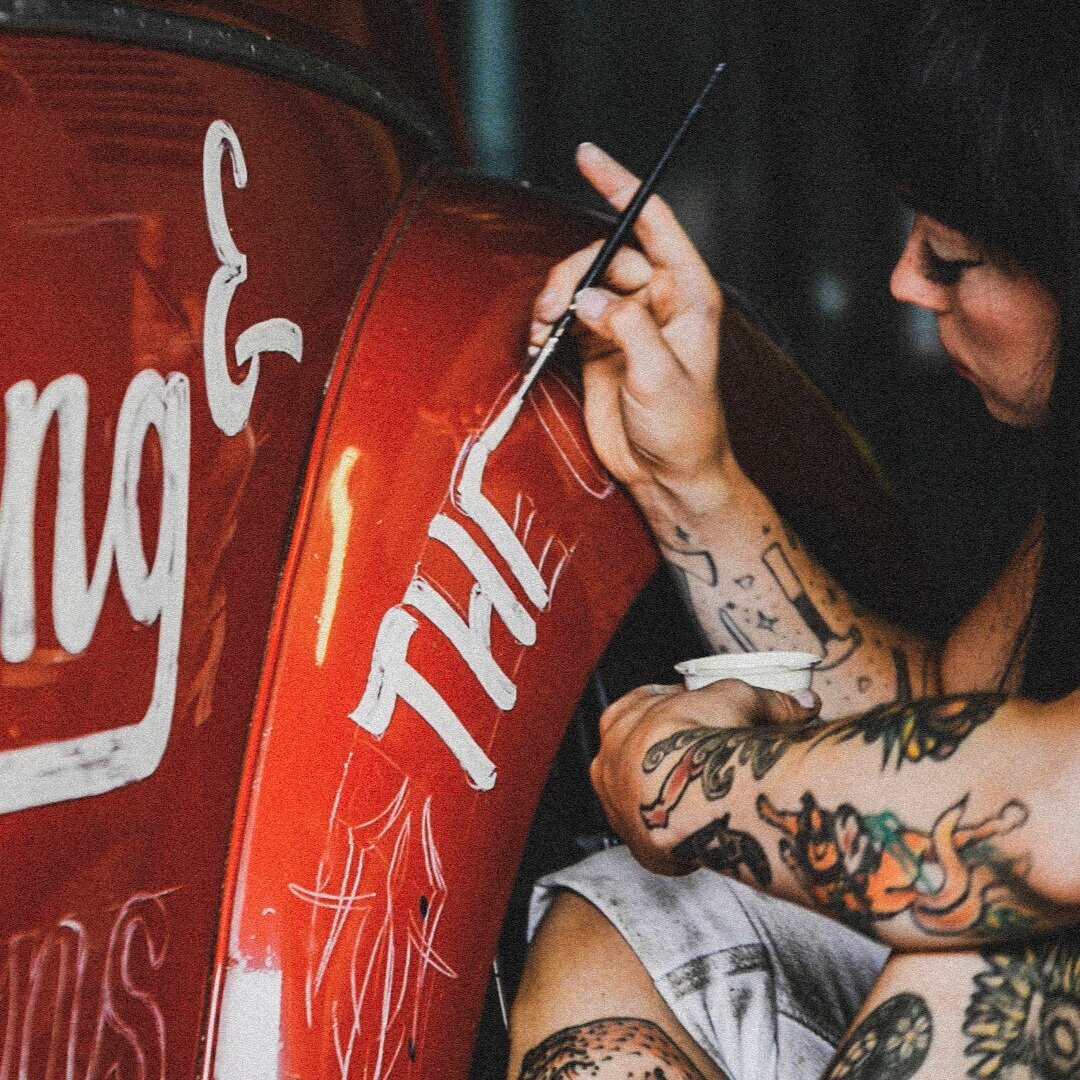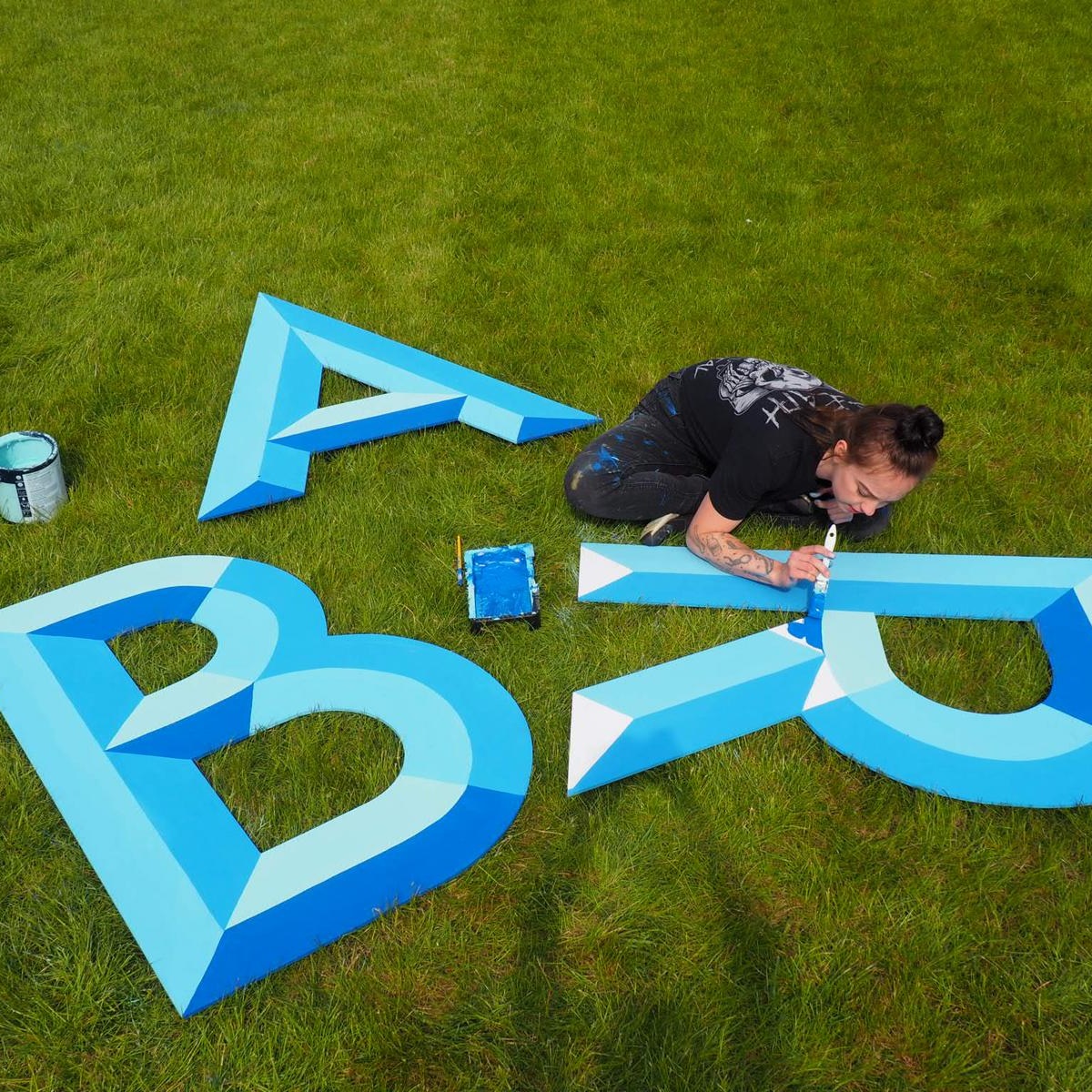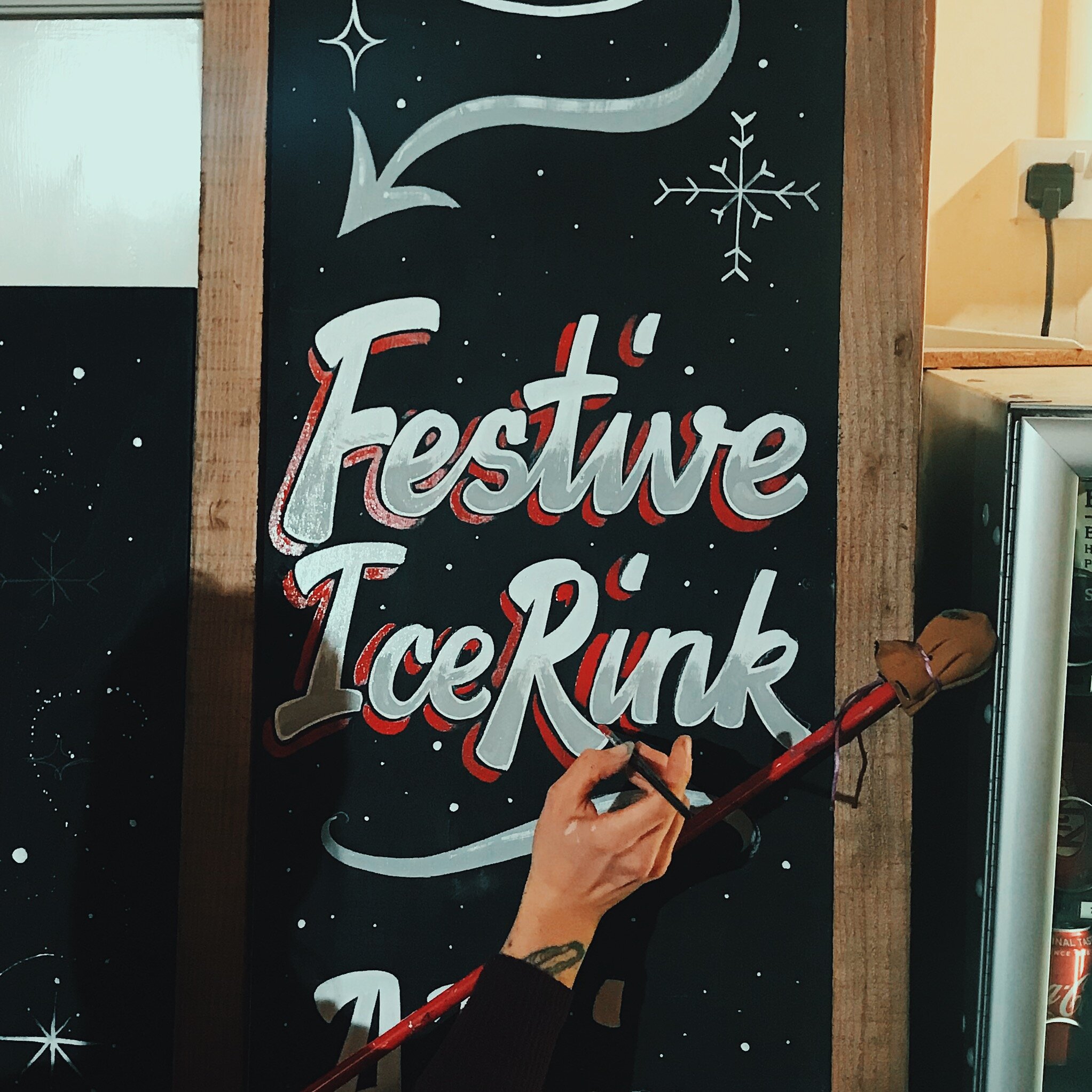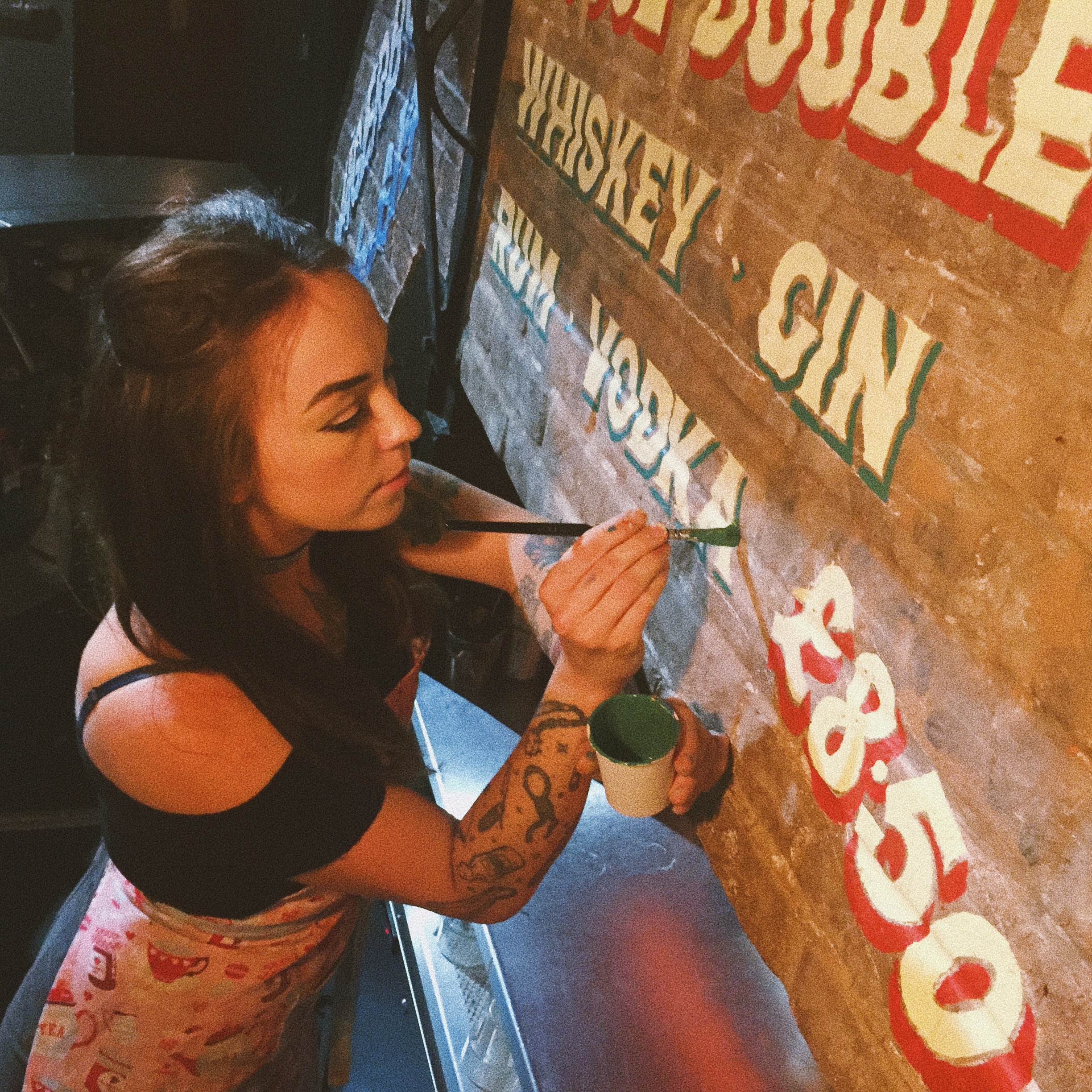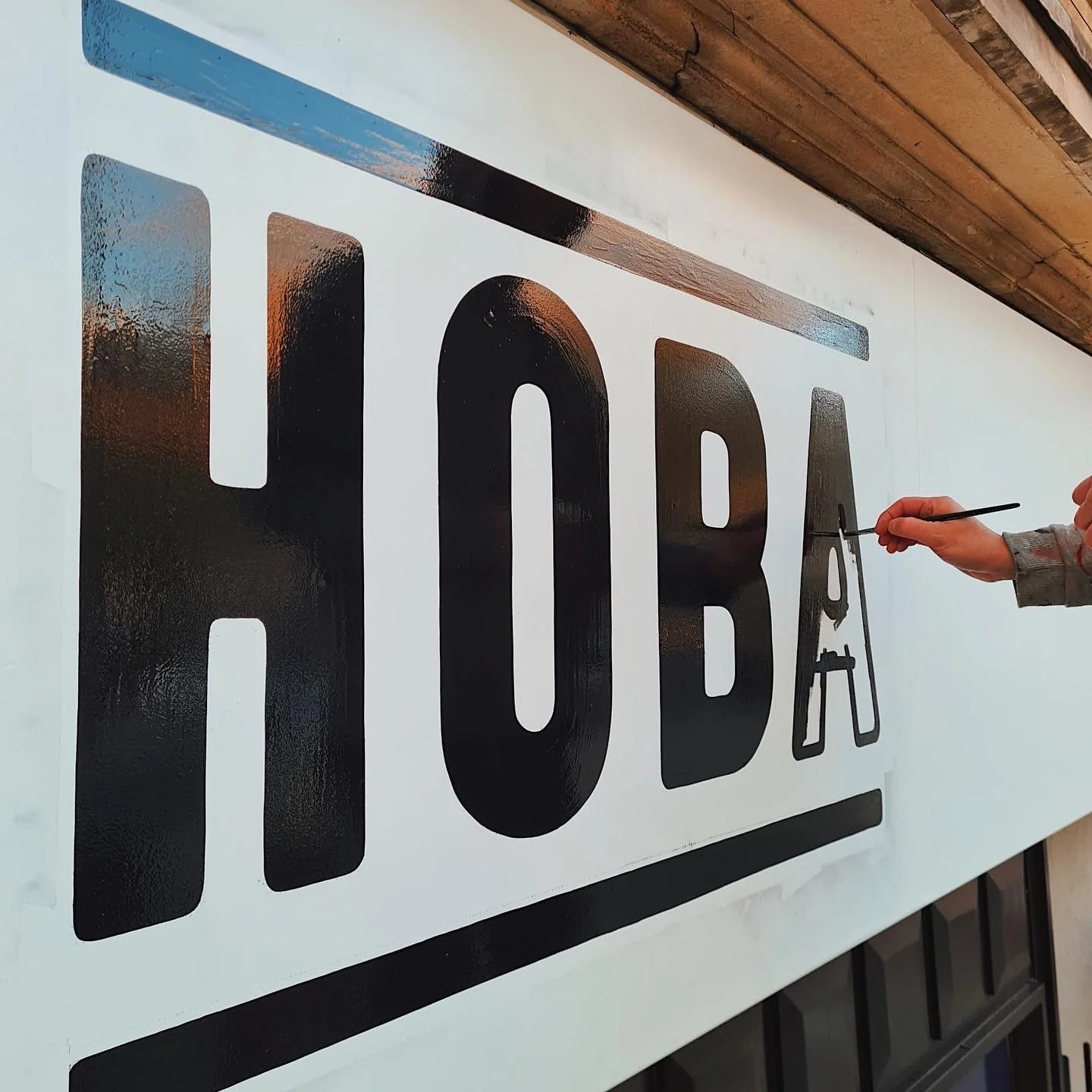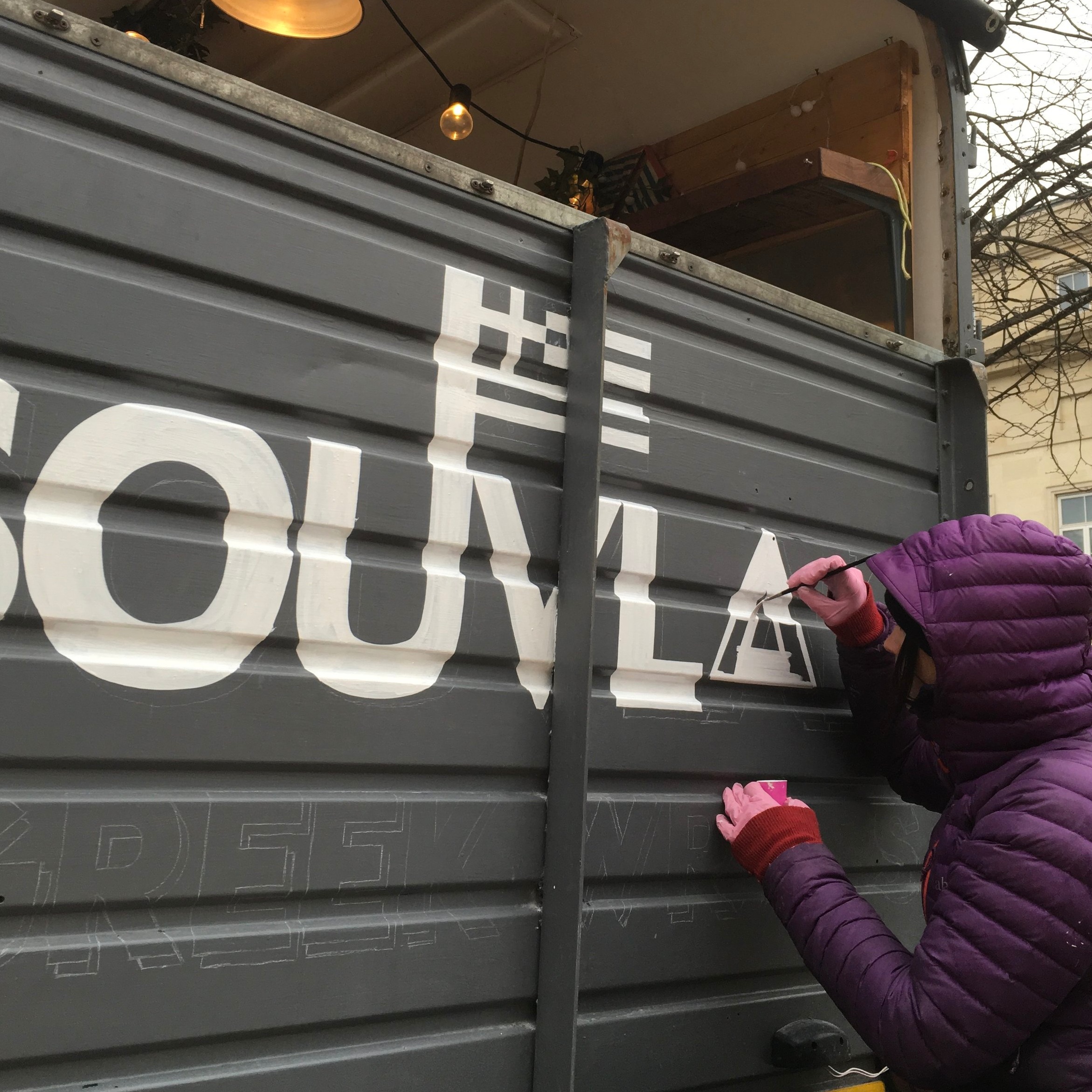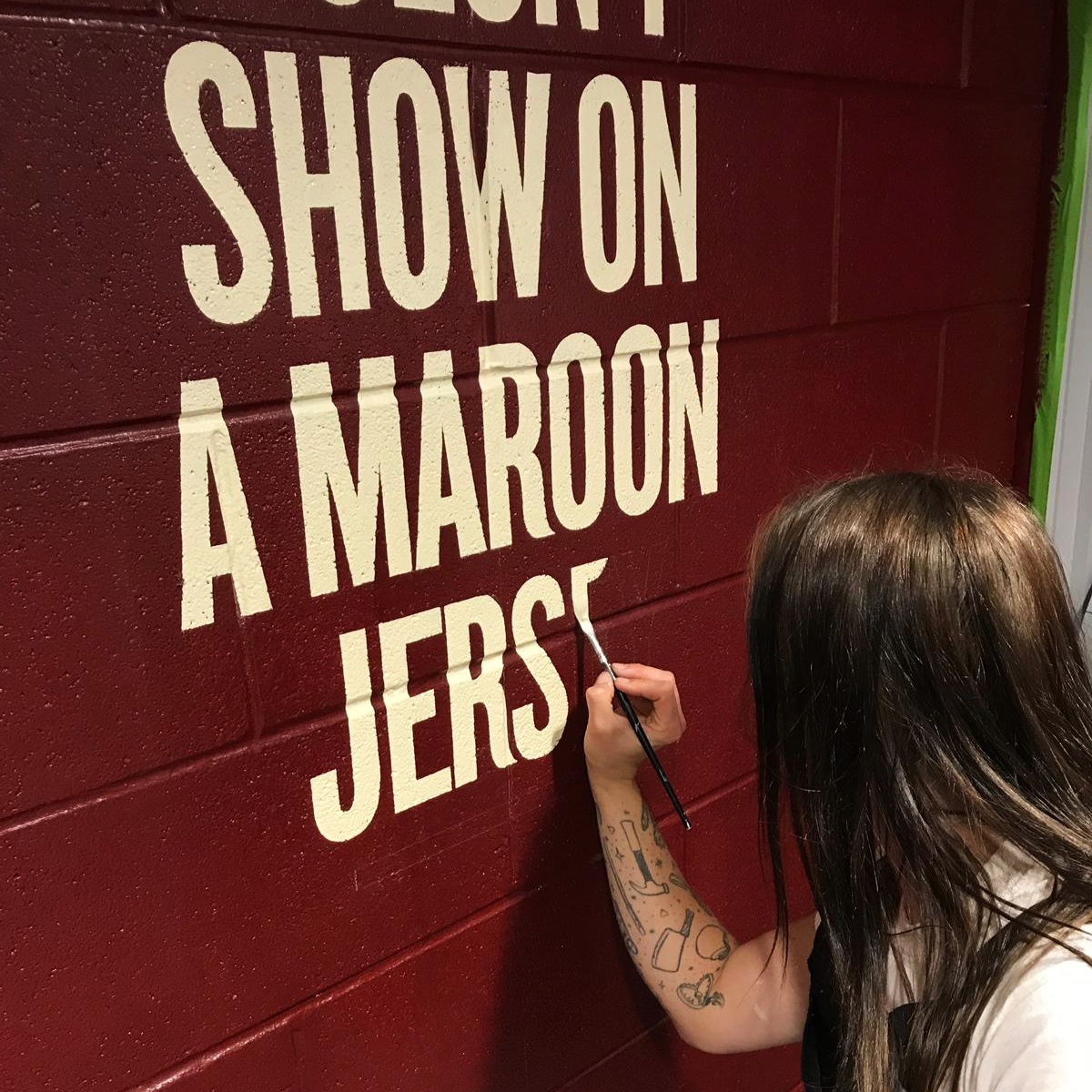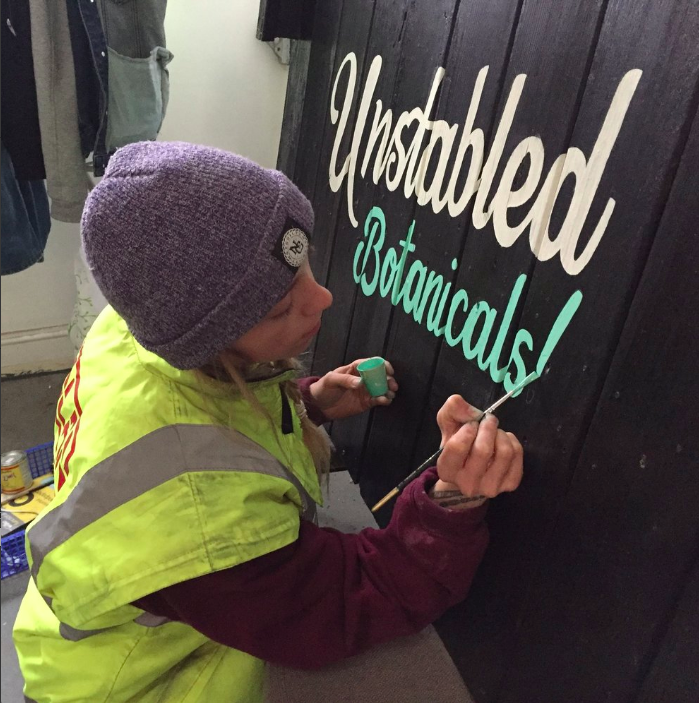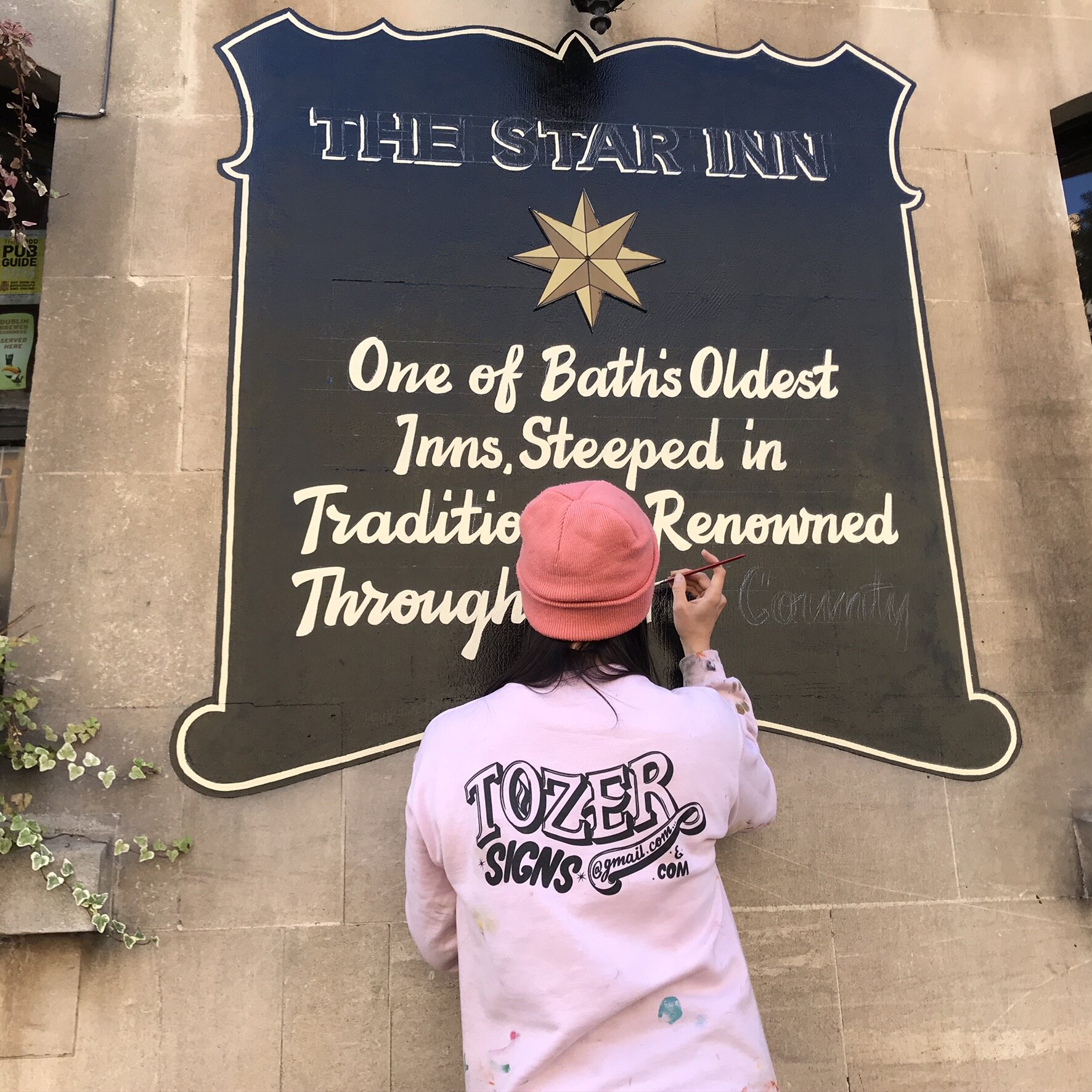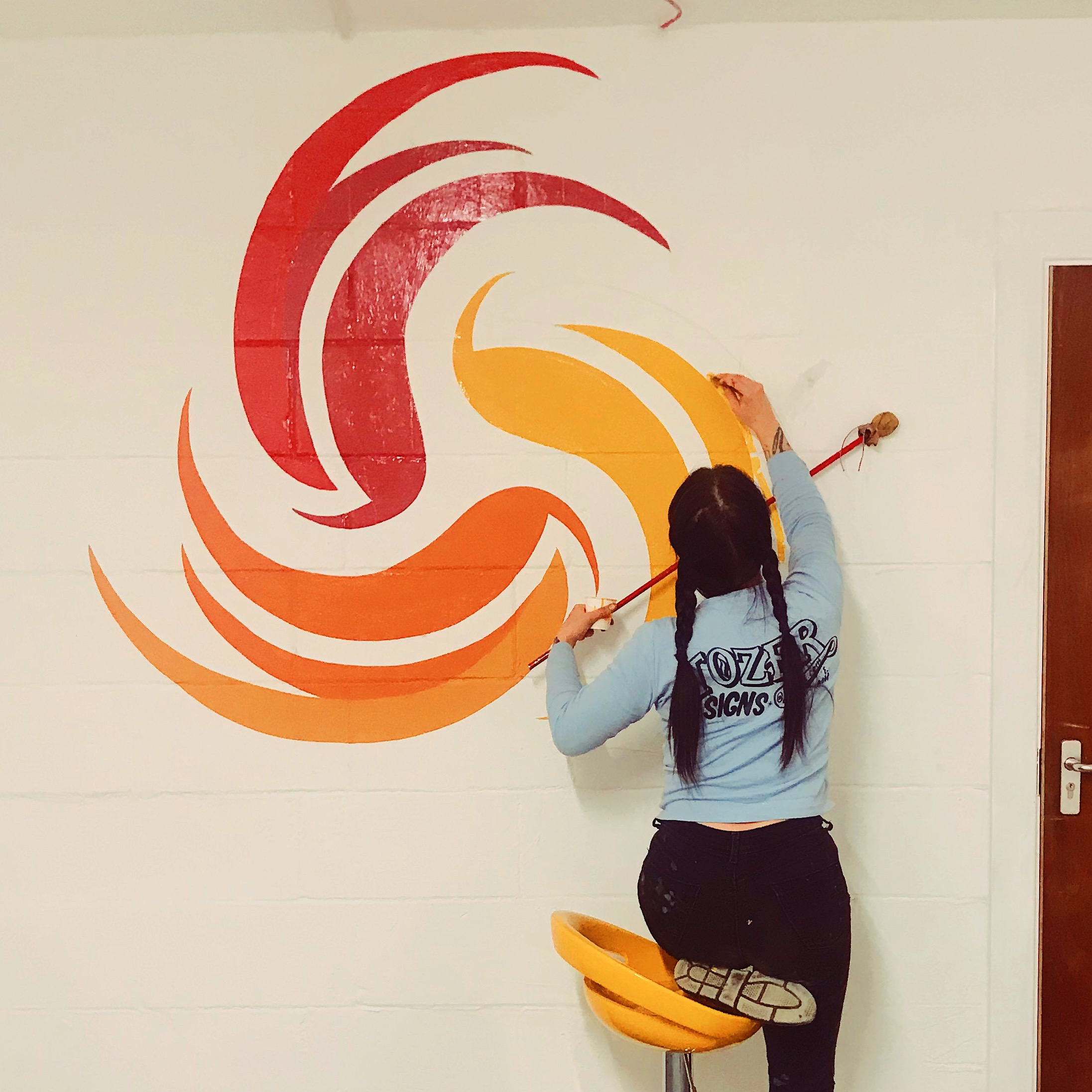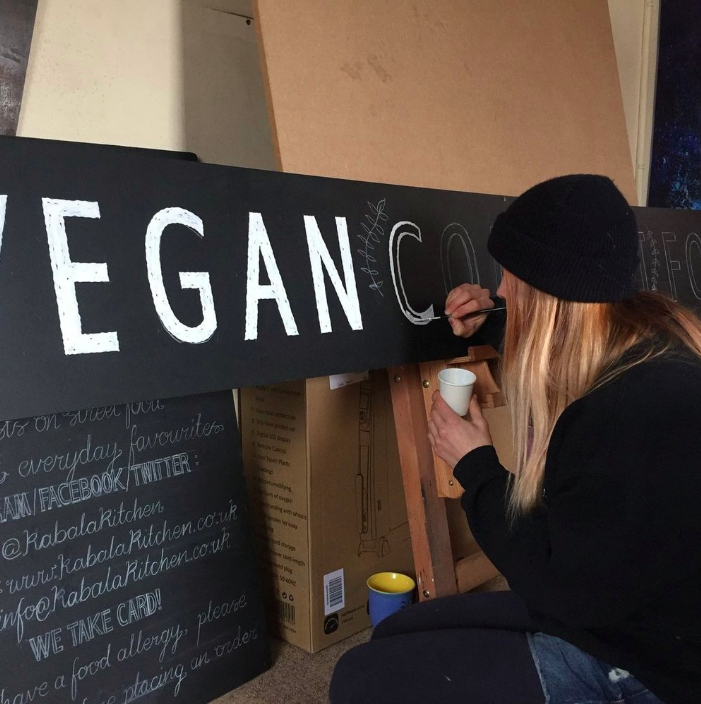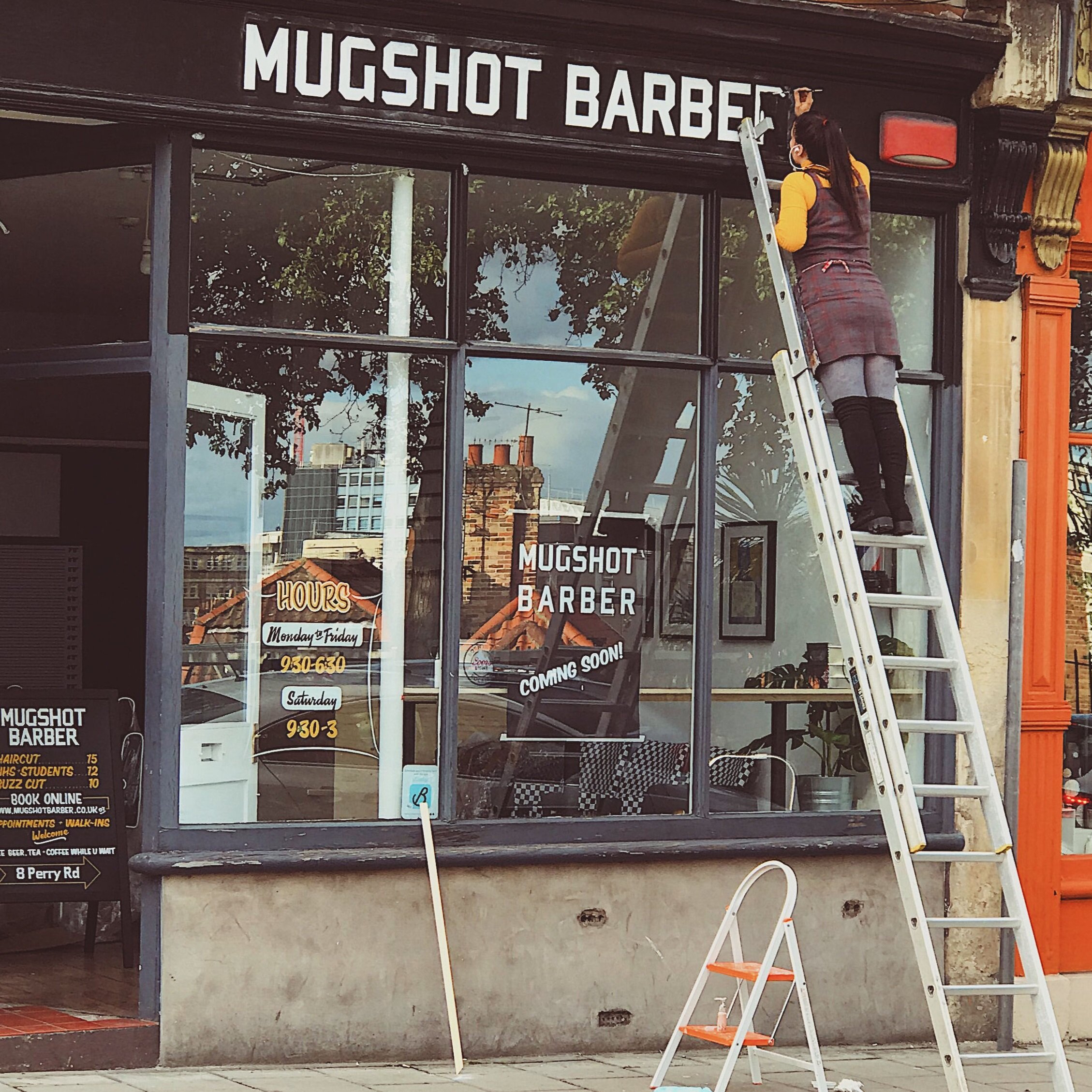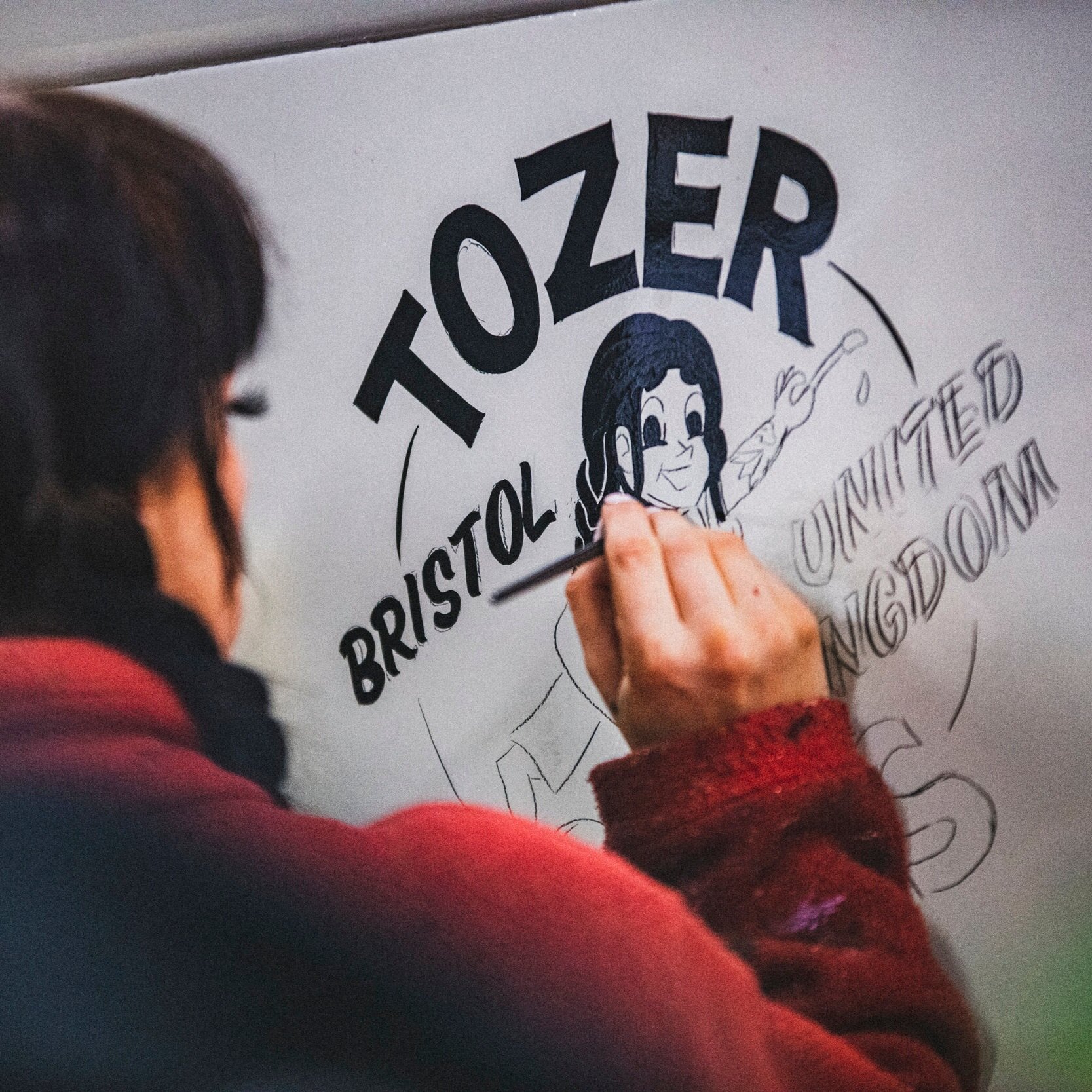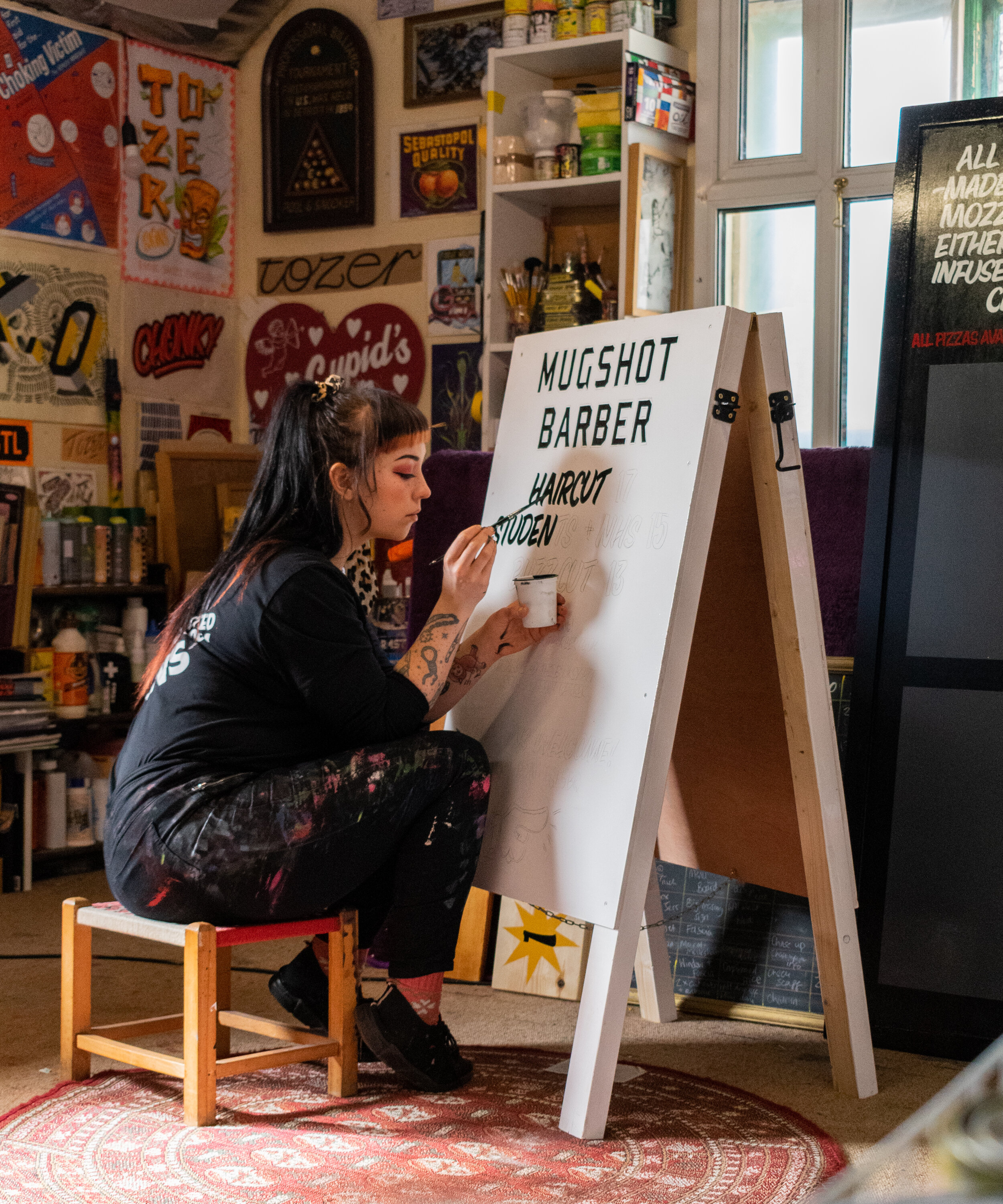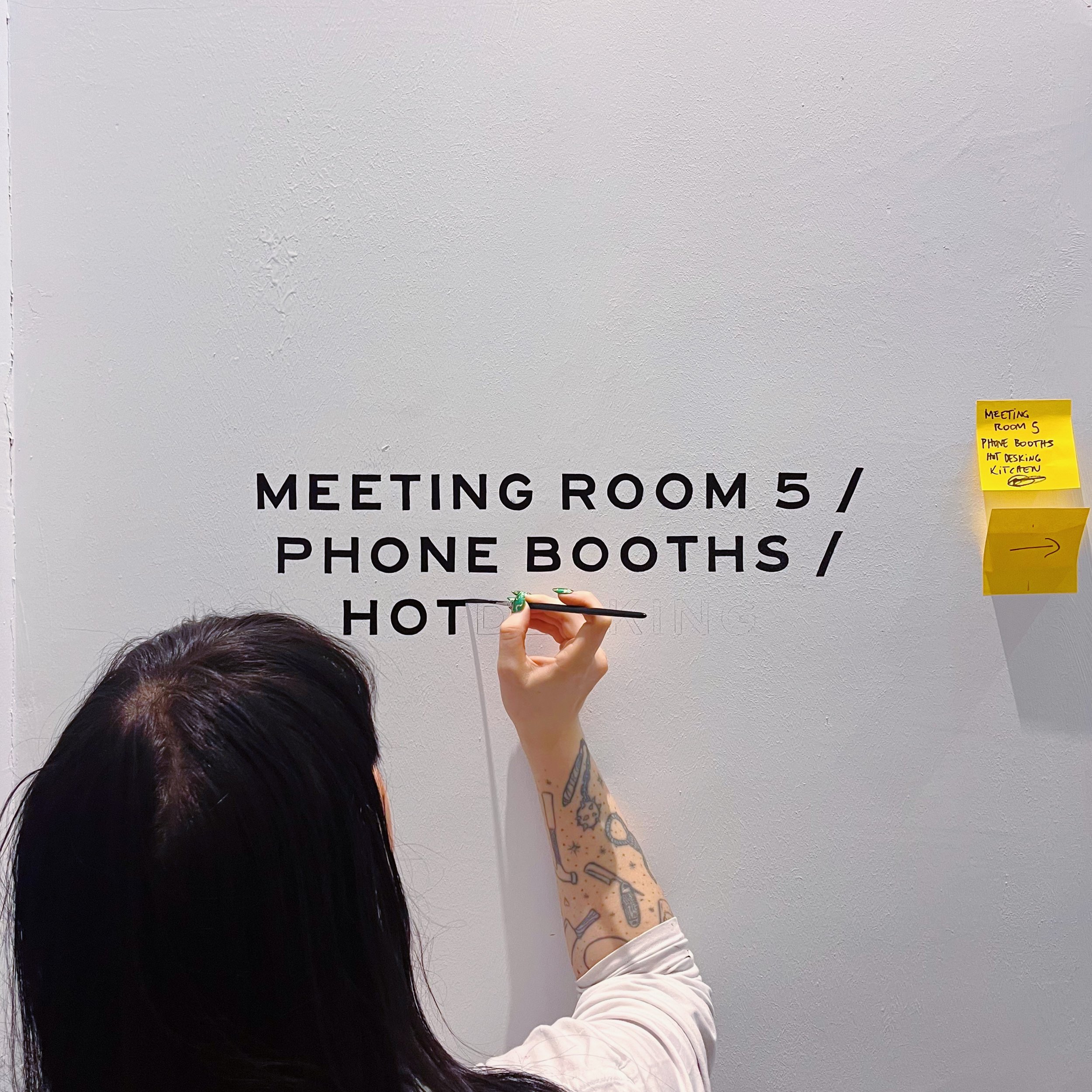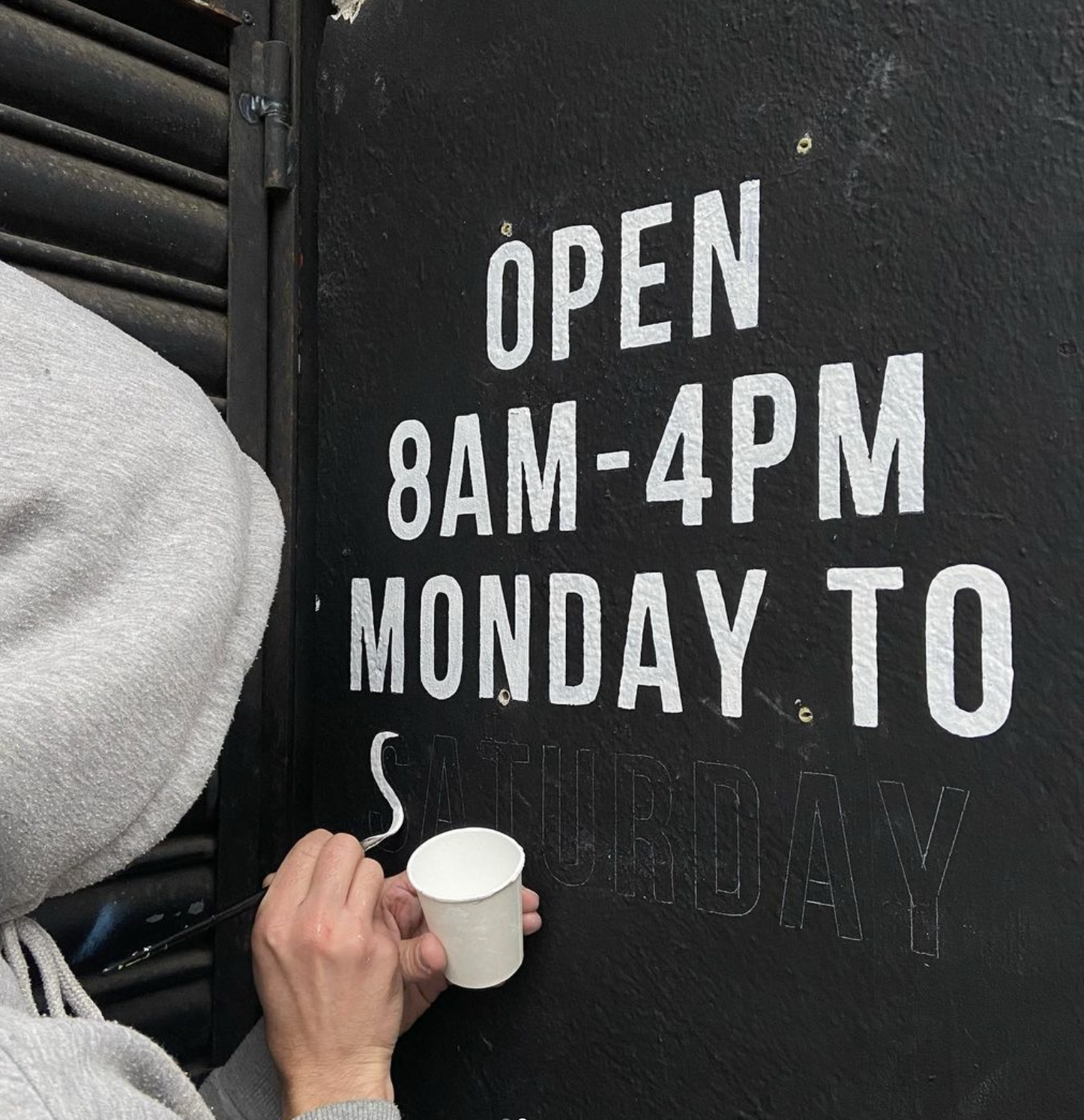hand-painted signs for businesses and private commissions.
gold leaf gilding, murals, fascias, windows and vehicles.
Since 2015, we’ve been devoted to bringing traditional materials, skills and processes to the modern day. We’ve worked big and small, across the world and close to home, in small detail and in large scale.
We design the majority of the signs we work on and can also create logos for our clients, however
if you have an existing design or visual identity we’re happy to work with this too!
Why hand-painted? Why Tozer Signs?
Vinyl vs paint
In the 70s and 80s, vinyl production ramped up and people hopped onto the wagon of ease and speed. The traditional methods seen in sign painting all but vanished, bar a few local tradespeople holding onto the craft.
Vinyl may still be the leading option in many areas, but there are a whole host of reasons why traditional signwriting have an upperhand, and why it should be considered for your business or personal commission.
surface
Signpainters often say they’ll paint anything that isn’t moving, but after working on all sides of a vintage van with three mechanics, welders and reupholster-ers working on it, I’ve found out I can apparently do that too.
We can work on just about anything - glass, wood, metal, brick, leather, canvas...
Vinyl and channel lettering can only go so far, and work well on only so many things. There are also specific trades which seem to naturally fit and flow with traditional lettering - barber shops and tattoo studios to name a few.
QUALITY
There’s a saying within the signpainting community - “paint fades, vinyl dies’.
After 8 years in this industry and after replacing many vinyl pieces, I’ve seen my fair share of peeled, damaged, half-missing or sunbleached vinyl. The same applies with 3D and channel lettering - how many times have you walked past a sign to see one or several letters missing?
While nothing is forever and aging is inevitable, hand-painted lettering will last a long time, and when it does begin to grow old, it will be with faint signs of character, the brushstrokes showing their history.
SUSTAINABILITY
Vinyl peeling and channel or acrylic lettering breaking or falling from the sign means that these options tend to last less time than traditional signwriting.
The tools and paints we use are tried and tested over several hundred years - if you look around any major city or town you’d be hard-pressed not to find examples of painted signwriting from several decades back - some examples still exist from hundreds of years ago. (A fun weekend activity is to head out and try to hunt down ghost signs in your area!)
We use top-of-the-range enamel and masonry paints. We’ve also become pretty good at mixing paint efficiently, meaning there’s very little waste in the process. Other, non-traditional methods of signwriting involve tons of wasted vinyl and offcuts that end up in landfill.
Our work means better signage, better for you, the high street and even the planet!
AESTHETIC
While some clients come to me with an existing visual language and brand identity or a design ready to paint, many come with the trust of me as a signwriter to bring good design to the project.
Many modern signwriters that work in non-traditional ways with plastic or metal do not have a background of, training in or much knowledge of good design - many of their styles are very outdated or overdone.
You can see this walking down most high streets nowadays - repetititve, homogenous and a little ...boring.
After spending almost a decade obsessed with signs of all kinds and more specifically, with layout, colour theory, design psychology and research specific to each project , I can spot a badly designed sign a mile off. Most of these are often designed in as little time and with as little personal touch as it takes for the printer to create the image.
care
More and more people are starting to recognise the beauty of going just a little slower, and of respecting tradition, history and community, as well as the individuality that comes with a hand-made sign.
While I research these traditions often and draw upon them heavily, I tend to bring a bit of a modern touch to a lot of my work, if it fits. When you come to me for a sign, you can rest assured that I want to do you proud, myself proud, and the rich line of signpainters before and ahead of me.
I’ve had the pleasure of working with hundreds of people now, near and far, big and small - flower shops, football clubs, television sets, car mechanics… let’s see what we can create together.
Behind every job is founder tozer, sometimes working with other talented signwriters to bring your sign dreams to life - big or small, near or far

